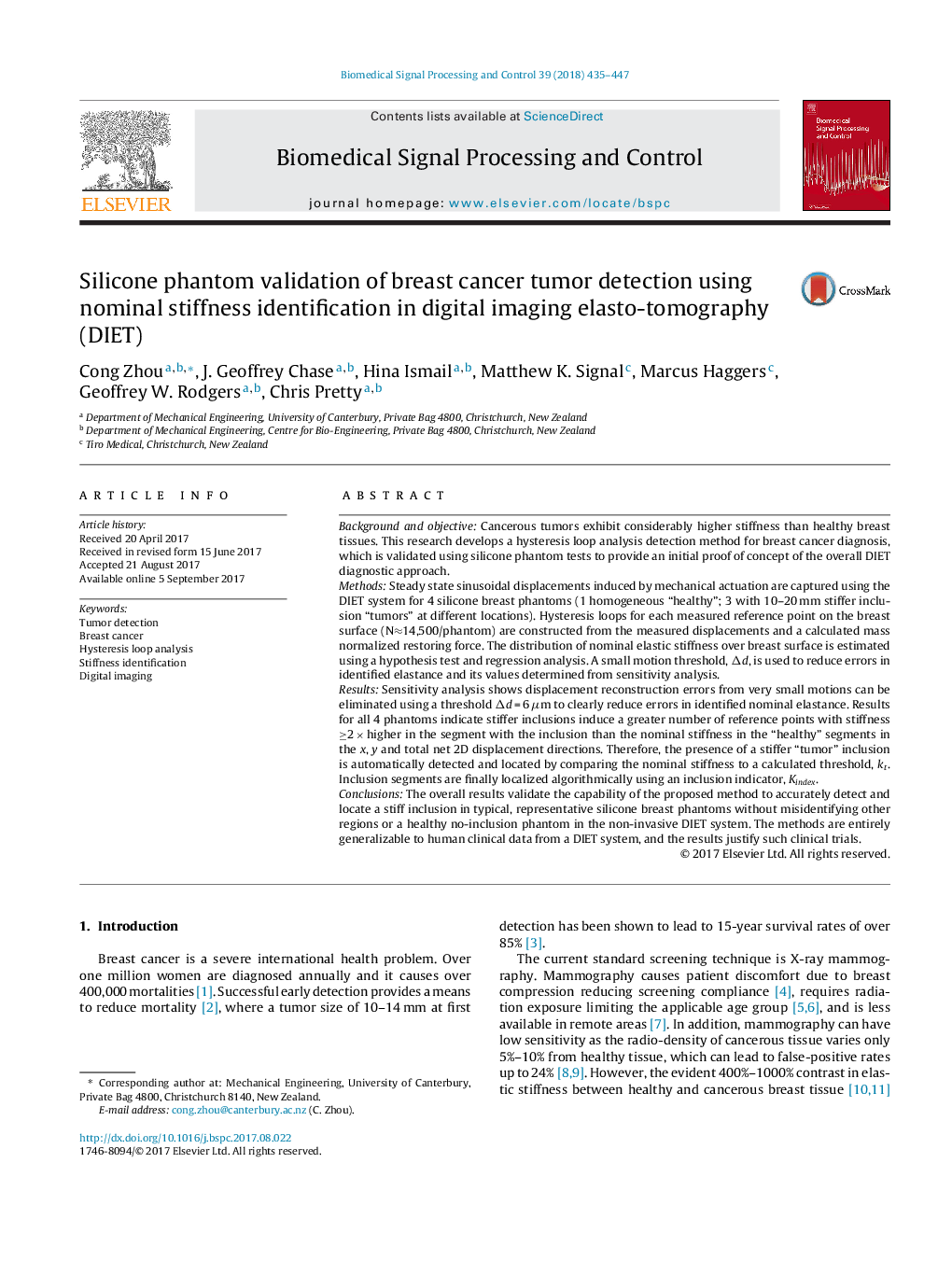| کد مقاله | کد نشریه | سال انتشار | مقاله انگلیسی | نسخه تمام متن |
|---|---|---|---|---|
| 4973501 | 1451641 | 2018 | 13 صفحه PDF | دانلود رایگان |
- This paper develops a practical hysteresis loop analysis method to identify nominal elastic stiffness for breast cancer diagnosis.
- Experimental phantom tests provide a necessary proof of concept and help justify a further human clinical trial.
- The method normalizes automatically to tissue stiffness level, thus avoiding limitations due to varying stiffness between individuals.
- Sensitively analysis shows good robustness to reconstruction errors and model uncertainty in the current DIET imaging approach.
Background and objectiveCancerous tumors exhibit considerably higher stiffness than healthy breast tissues. This research develops a hysteresis loop analysis detection method for breast cancer diagnosis, which is validated using silicone phantom tests to provide an initial proof of concept of the overall DIET diagnostic approach.MethodsSteady state sinusoidal displacements induced by mechanical actuation are captured using the DIET system for 4 silicone breast phantoms (1 homogeneous “healthy”; 3 with 10-20 mm stiffer inclusion “tumors” at different locations). Hysteresis loops for each measured reference point on the breast surface (Nâ14,500/phantom) are constructed from the measured displacements and a calculated mass normalized restoring force. The distribution of nominal elastic stiffness over breast surface is estimated using a hypothesis test and regression analysis. A small motion threshold, Îd, is used to reduce errors in identified elastance and its values determined from sensitivity analysis.ResultsSensitivity analysis shows displacement reconstruction errors from very small motions can be eliminated using a threshold Îd = 6 μm to clearly reduce errors in identified nominal elastance. Results for all 4 phantoms indicate stiffer inclusions induce a greater number of reference points with stiffness â¥2 Ã higher in the segment with the inclusion than the nominal stiffness in the “healthy” segments in the x, y and total net 2D displacement directions. Therefore, the presence of a stiffer “tumor” inclusion is automatically detected and located by comparing the nominal stiffness to a calculated threshold, kt. Inclusion segments are finally localized algorithmically using an inclusion indicator, Kindex.ConclusionsThe overall results validate the capability of the proposed method to accurately detect and locate a stiff inclusion in typical, representative silicone breast phantoms without misidentifying other regions or a healthy no-inclusion phantom in the non-invasive DIET system. The methods are entirely generalizable to human clinical data from a DIET system, and the results justify such clinical trials.
Journal: Biomedical Signal Processing and Control - Volume 39, January 2018, Pages 435-447
